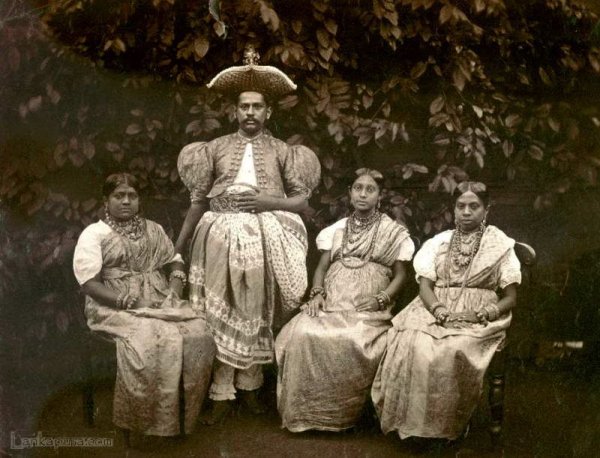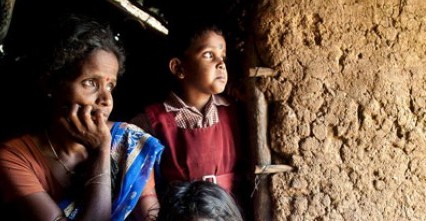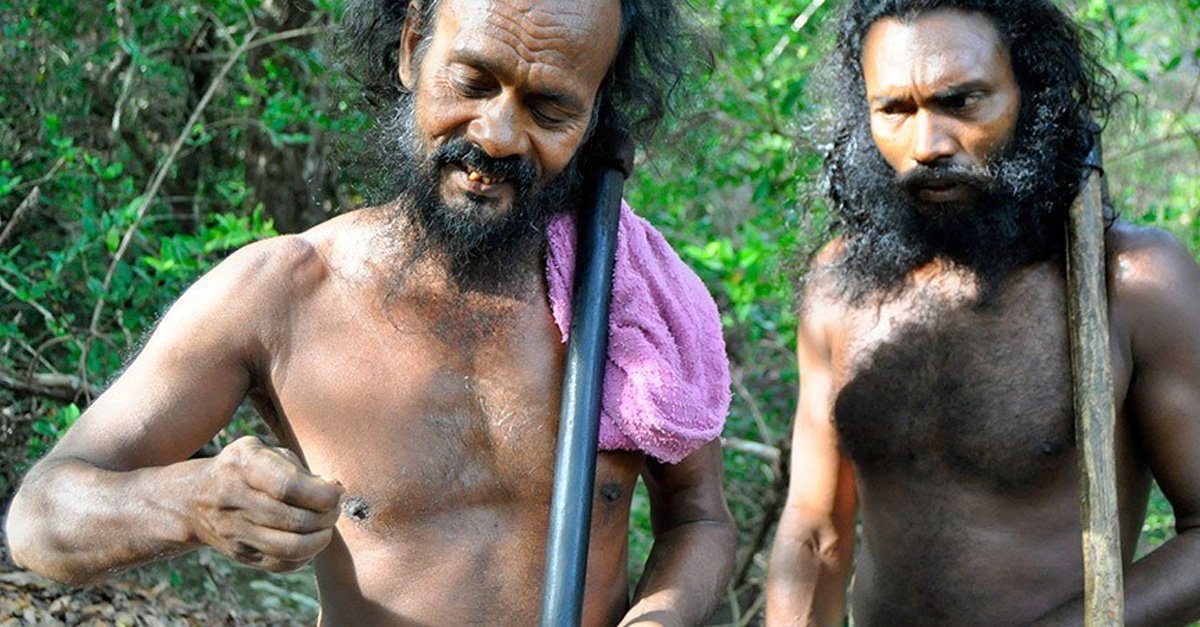
maadiyanganalle dandDukacca (vehicle of the ocean),
uDatanin mandovena diyaracca (water falling from above),
baDapojjen mangaccanvaa (come from the belly),
kurukurugaccana ulpojja (spike making kuru kuru sound).
These are the words for ship, rain, to be born, and pencil in the language of the Veddas, the indigenous people of Sri Lanka. With a modern vocabulary heavily influenced by Sinhala, their tongue was previously thought to be just a dialect. But upon closer examination, we find a strange mix of elements that defy simple classification, such as these poetic paraphrases, which use Sinhalese words but combined in a unique way to form new words of their own.
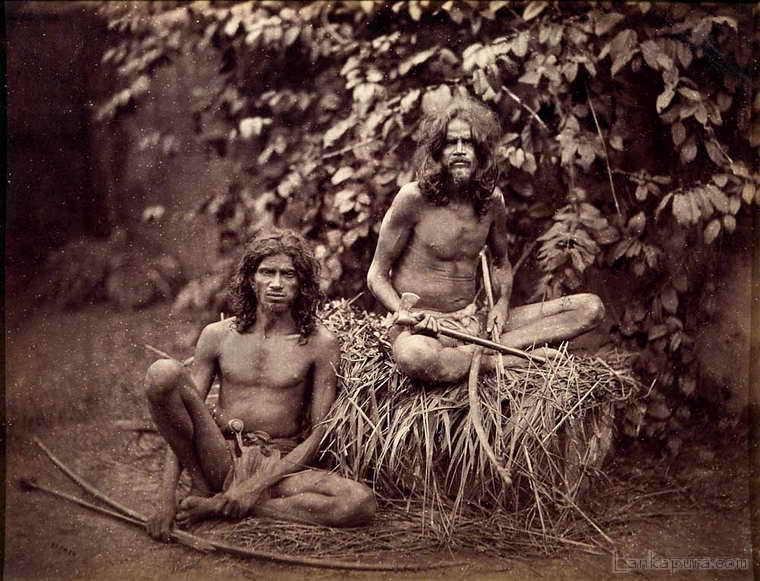
Photo credit: lankapura.com
The Veddas (hunters), or Wannilayetto (people of the forest) as they call themselves, populated the island before the arrival of Tamil and Sinhalese settlers around 600 BC. Today there are only three major groups in existence, and their settlements can be found in the Anuradhapura district, the Uva Province, and along the East coast. “They live in clusters of small villages or hamlets with their close kin,” said Annemari de Silva, a researcher at the International Centre for Ethnic Studies (ICES), “and are led by chiefs, who aren’t explicitly chosen as leaders, but are older, experienced men who command respect amongst the clans.”
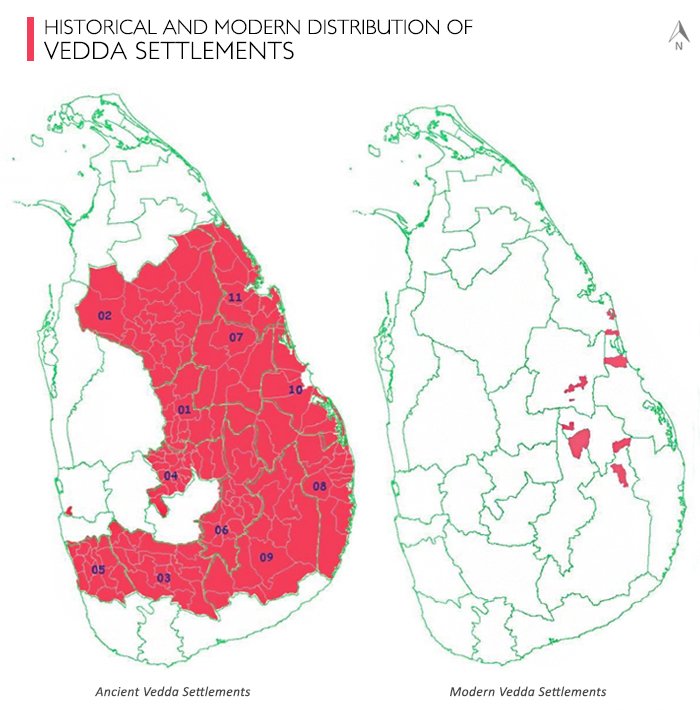
Photo credit: Asitha Punchihewa/University of Colombo
For most of their history, the Wannilayetto provided for themselves by hunting animals, gathering fruits and honey, and practising slash-and-burn agriculture — a form of farming that is also known as chena cultivation in Sri Lanka. Although it was common for them to remain in one place for several years, if hunting was poor in the area or a harvest failed, they would relocate to a better location. “A common misconception about the Wannilayetto is that they are all hunters who are completely removed from the rest of society,” De Silva said. “Nowadays they have permanent paddy farms, keep livestock, use guns when hunting, trade with nearby villages, and take on temporary employment as unskilled labourers.”
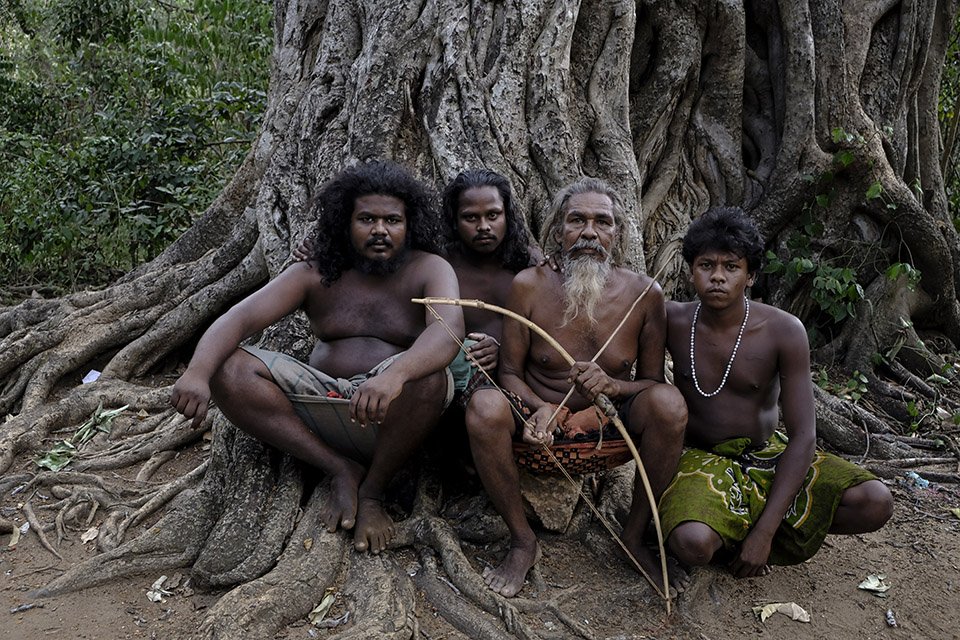
Photo credit: Omar Reda
Even historically, the Wannilayetto maintained contact with the other peoples of Sri Lanka by trading their produce—primarily game and honey—with other villages. In the account of Robert Knox, a 17th Century English sailor who was captured by the Kandyan king, Rajasinghe II, he mentions that among the “wild men of the forest,” there were a “wilder sort” that lived unruled in the forest, and a “tamer sort” that would offer their services to the king, and sometimes even fight in his armies. According to Professor K.N.O Dharmadasa, a linguist at the University of Peradeniya, this account may reveal the process by which the hybridised Wannilayetto language of today came to be.

Photo credit: journals.opernedition.com
The original Wannilayetto language, of which there have no records, is thought to have blended with Sinhalese through a process known as the ‘language contact phenomenon’ or forming a new ‘contact language’. “Initially, in situations of interaction such as trade, the speakers of the dominant language, Sinhalese, would have taken the initiative in establishing a code of communication using simple words and phrases to identify objects and actions,” explained Dharmadasa. “ The speakers of the substrate language, Original Vedda, would have then responded by reproducing those utterances with modifications based on their own linguistic habits.”
Additionally, certain modern Wannilayetto words are derived from older Sinhalese words which are no longer in use today, such as the word diyamaccca, meaning fish, derived from the archaic Sinhalese word diyamas found in the ‘Sikhavalandait’, a 10th Century monastic work. As these words have been found to come from Medieval Sinhalese of the 10th to the 13th Centuries, it suggests that it was during this time that the contact between the languages began, or at least was most significant.
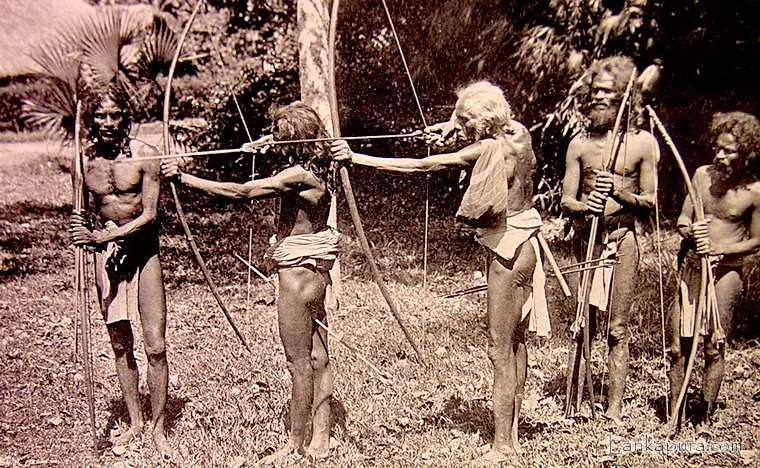
Photo credit: lankapura.com
The first form of the contact language would be classified as a pidgin, which is a simplified language used to communicate with the native speakers of another language. In the Wannilayetto language, one can still see features of a pidgin language, such as the use of suffixes to indicate the type of object referred to. For animate nouns, the suffix –atto is added for personal pronouns (meeatto: I or we), and –laatto is added for all other animate nouns (deyyalaato: god, pannilaatto: worm). For inanimate nouns, the suffixes –pojja and –raaccaa for personified nouns (irapojja: sun, giniraaccaa: fire), and –rukula and –danda are used to denote body parts (ayrukula: eye, ugurudanda: throat).
In Chinese pidgin English, a similar system of suffixes is used: –fela to denote animate nouns (derived from the English word, fellow), and –pisi to denote inanimate nouns (derived from the English word, piece). Interestingly, suffixes in the Wannilayetto language are only added to Sinhalese loanwords; the few words of the original Vedda language that remain today have no suffixes.
“The pidgin which arose in situations of Vedda-Sinhalese contact, being used by the more adventurous and progressive among the Vedda, would soon have achieved a prestige status, mainly because of its utility value, and its propagation among others would have duly followed,” Dharmadasa said. He also claims that the lack of protracted contact between the two groups is the reason a complete language shift did not occur, and why the creole language was eventually formed. “Nobody speaks a pidgin as their mother tongue,” Dharmadasa said, “but eventually, as it takes on more formal rules and structures, as parents speak it to their children, and when it becomes main language of a community, rather than for communication between communities, then it is classified as a creole.”
Because most of the words in the Wannilayetto language are derived from Sinhala, for a long time it was considered a dialect of that language. However looking past just the vocabulary to the other features of the language, linguists have found many substantial differences. For instance, the Wannilayetto language has different phonotactics than Sinhala. Phonotactics are the rules for the arrangement of sounds. For example, in English,you can have words starting with /sp/ (Sprint, spore), but there are no words starting with /bm/. /kn/ (knight, knee) is an arrangement that used to be pronounced, but not anymore, while /Skw/ is a unique sound in english (squirrel), which is difficult for speakers of many other languages. In the Wannilayetto language, sounds like /tch/, and /dg/ are very common, while they are not often heard in Sinhala.
Further differences exist, such as the numerical system and the use of numbered words. In Sinhala, there are different words for two people (dennek), two things (dekak), and two times/twice (deparak), but in the Wannilayetto language, there is only dekamak. Different words indicating negation have also been simplified; instead of naa (no), epaa (don’t want), baa (cannot), nemee (not), bari (not possible), the Wannilayetto just say koduy.
The Wannilayetto language may also have had a substratum influence on Sinhala, since there are certain Sinhalese words that cannot be traced back to either Dravidian or Indo-Aryan roots, which Dharmadasa considers to be loanwords from the original Wannilayetto language. These include common words like kola (leaf), and gala (stone), as well as many words denoting body parts such as oluva (head), kakula (leg), bella (neck) and kalava (thighs). The ‘Sidatsangarava’, a 13th Century text on classical Sinhalese grammar, even notes that the word kolamba (meaning ford or harbour) comes from an indigenous source.

Photo credit: Frances Schwabenland
The Wanniyaletto of the east coast do not speak Sinhala or the Sinhala-Vedda creole. Rather, it seems to be a Tamil-Vedda creole. However, this language has not been studied in depth, partly because of the civil war. De Silva also noted that use of the creole in the inland communities is diminishing: “The younger Wannilayetto do use some words from the creole, but more often speak Sinhala, often code-switching between the two. Only about 300 people today, mainly the older generation, still speak the creole fluently.”
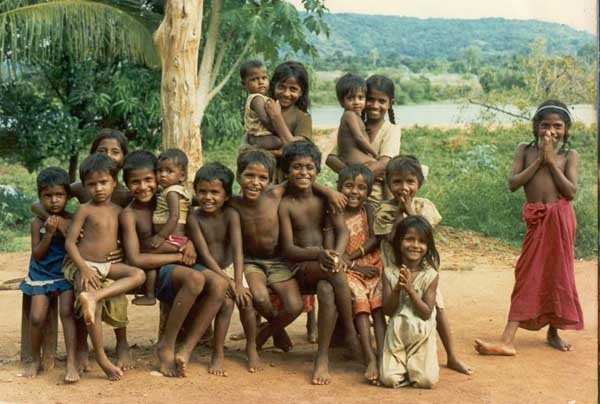
Photo credit: vedda.org



